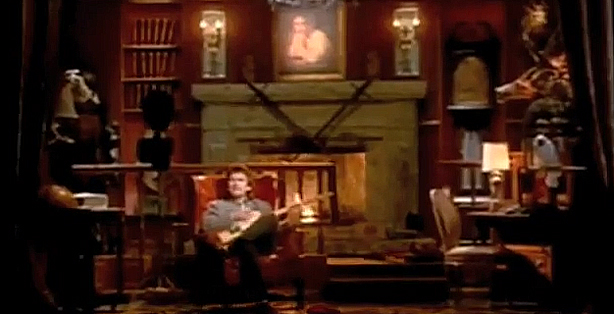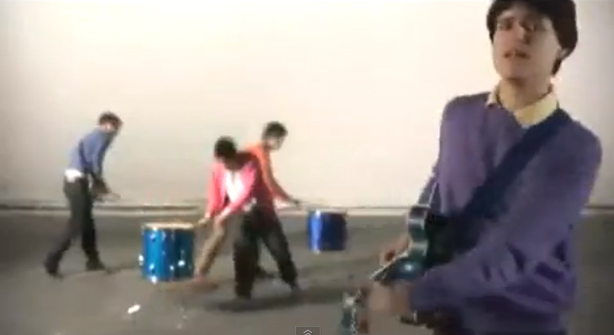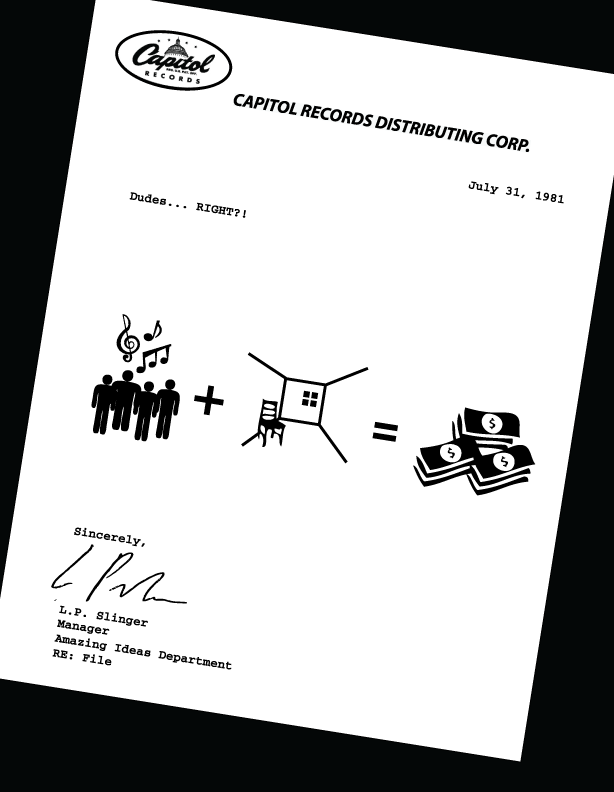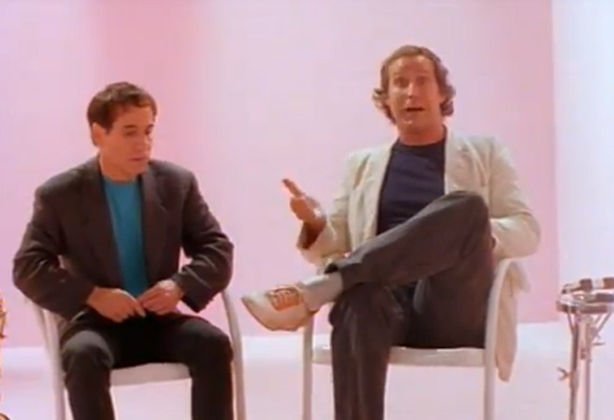Everyone knows what happened when MTV premiered and dropped that Buggles video some thirty-plus years ago, but a certain trend that began in the early days of music videos has me intrigued: What was with videos taking place in one single room?The first thing that comes to mind is budget issues, but strangely, many of these groups did impressively well, and the songs that the videos featured are some of the more memorable songs of the time. Was the minimalist approach just the artists standing by the integrity of the songs themselves by being truly afraid that the video would kill the radio star? Or was this just the natural course in the early evolution of a musical concept still in its infancy?One thing to get out of the way is the fact that music videos predated MTV—by as much as 55 years! Early music marketers used movie clips to sell recorded music. Much later, the more contemporary look arrived, be it a promotional video for a 60's rock group or a made-for-TV 70's British music video. It turns out, music videos were not something that MTV invented, just something they capitalized on. In the 1980's, the single room video took over.For the punk/new wave crossover, many groups opted for the simple white or mostly white room. The Jam's "Going Underground," 999's "Homicide," and The Knack's "Frustrated" stuck to tight pants, shiny gear, and white walls. Later videos like XTC's "Making Plans For Nigel" and Talking Heads' "Once in A Lifetime" followed a similar formula, but with the addition of some state-of-the-art visual effects.All of these songs continue to sell today and were responsible for the evolution of the trend that would occur a few years later.The Cure did it in 1987, when Robert Smith was on the rare, positive upswing of his generally gloomy mood. The video was for "Why Can't I Be You" off of The Cure's Kiss Me, Kiss Me, Kiss Me. The formula was simple: get a room, add people (and/or action), add more people(and/or action), get wild, sell records.That same year, George Harrison made a similar move with his cover of Rudy Clark's "I've Got My Mind Set On You." He picked a room and, while playing his song, the room turned into an experience you might have on a ride at Disney World on acid. In 2003 The Postal Service did an homage to 80's music videos and actually set the video to the song "The District Sleeps Alone Tonight" in a single bedroom that became increasingly action packed as the video went on.In 2008 Vampire Weekend used the formula and almost imitated The Cure's "Why Can't I Be You" from start to finish for their video for "A-Punk."
In 2003 The Postal Service did an homage to 80's music videos and actually set the video to the song "The District Sleeps Alone Tonight" in a single bedroom that became increasingly action packed as the video went on.In 2008 Vampire Weekend used the formula and almost imitated The Cure's "Why Can't I Be You" from start to finish for their video for "A-Punk." All four songs reached mentionable popularity.Then there's the final thought on the single room video.Could this phenomenon simply be the fault of labels that refused to spend money on what they saw as a low-return promotion? Or were the artists just uninterested in expanding their music visually?
All four songs reached mentionable popularity.Then there's the final thought on the single room video.Could this phenomenon simply be the fault of labels that refused to spend money on what they saw as a low-return promotion? Or were the artists just uninterested in expanding their music visually? What a major label internal memo may have looked likeIf so, how do you explain what happened in 1991 when Geffen gave the green light for Nirvana to premiere their video for "Smells Like Teen Spirit," a video that took place in one giant room? The song would obviously end up setting the stage for alternative music of the 90's. Another success story.
What a major label internal memo may have looked likeIf so, how do you explain what happened in 1991 when Geffen gave the green light for Nirvana to premiere their video for "Smells Like Teen Spirit," a video that took place in one giant room? The song would obviously end up setting the stage for alternative music of the 90's. Another success story. Is Paul Simon upset that Chevy Chase is stealing the spotlight, or is he angry about the $800 budget he was granted for a music video?There is some truth to the anti-video theory out there as well. Allegedly in 1985, Sire Records requested that The Replacements make a music video that would (at least) include frontman Paul Westerberg. As the story goes, Paul hated the idea of a video and thought it was bastardizing songs and musicians and, though forced, he agreed to making the video. The video was for "Bastards of Young" off of the album Tim. It included only a zooming out of a stereo system playing the track, and Westerberg's arm seen smoking a cigarette.Whether or not shooting music videos in one single room is truly the key to a successful single or just another product of my obsessive imagination, I may never know. Regardless, there is a certain charm to it all.@jeffogiba
Is Paul Simon upset that Chevy Chase is stealing the spotlight, or is he angry about the $800 budget he was granted for a music video?There is some truth to the anti-video theory out there as well. Allegedly in 1985, Sire Records requested that The Replacements make a music video that would (at least) include frontman Paul Westerberg. As the story goes, Paul hated the idea of a video and thought it was bastardizing songs and musicians and, though forced, he agreed to making the video. The video was for "Bastards of Young" off of the album Tim. It included only a zooming out of a stereo system playing the track, and Westerberg's arm seen smoking a cigarette.Whether or not shooting music videos in one single room is truly the key to a successful single or just another product of my obsessive imagination, I may never know. Regardless, there is a certain charm to it all.@jeffogiba
Advertisement
The White or Mostly White Room:
The Crazy Party Room Video:
Advertisement


Budget Rooms or Anti-Video Theory:


